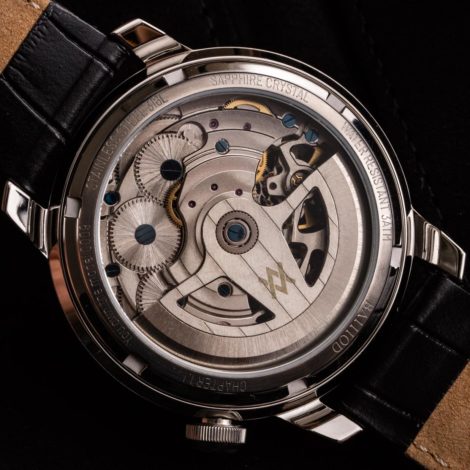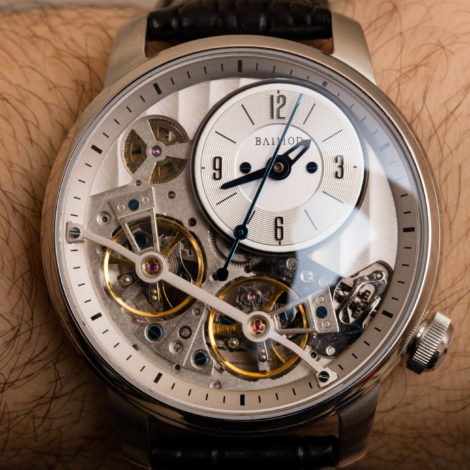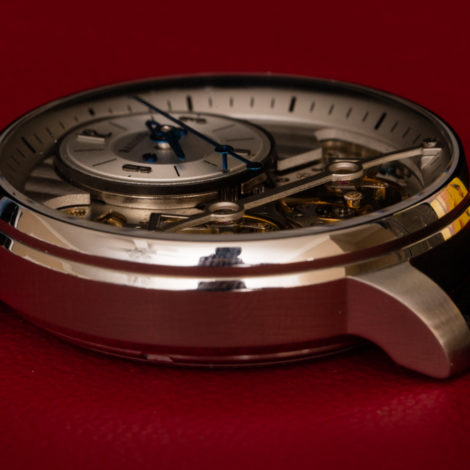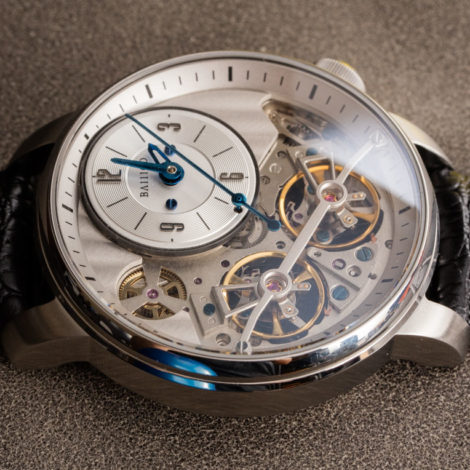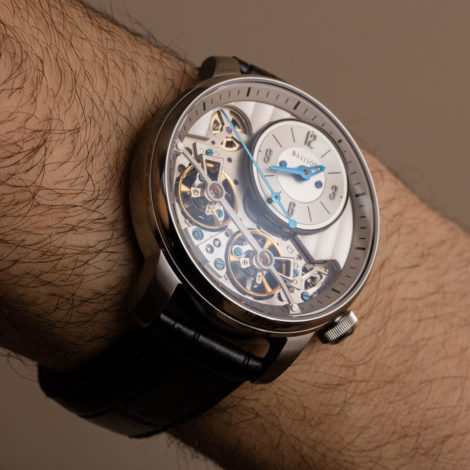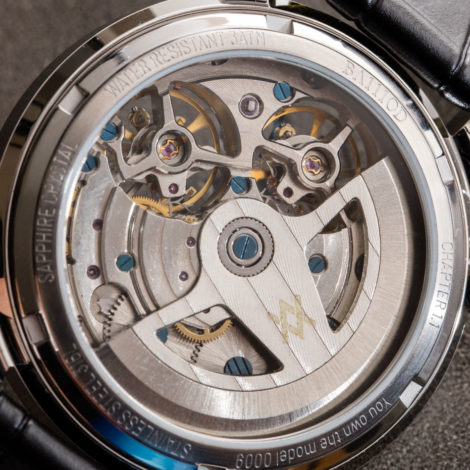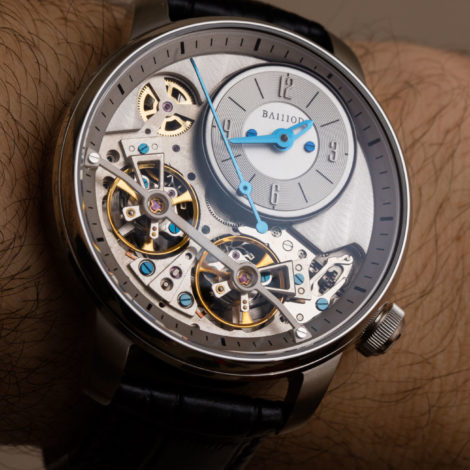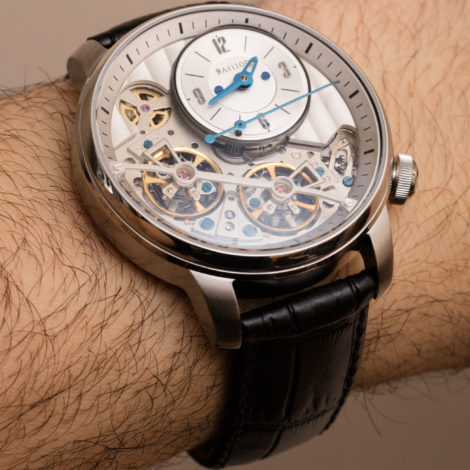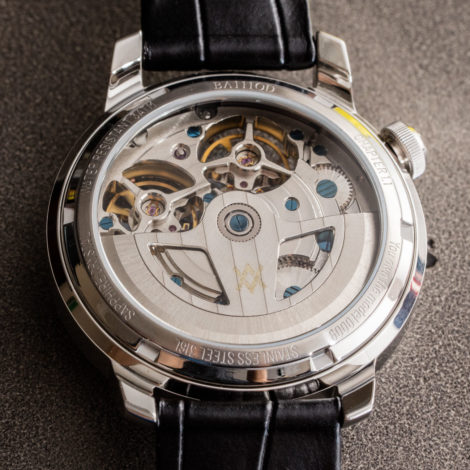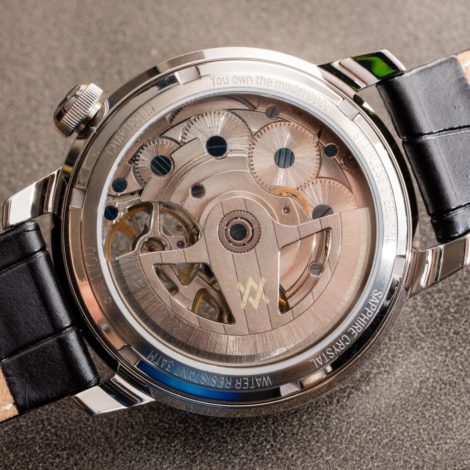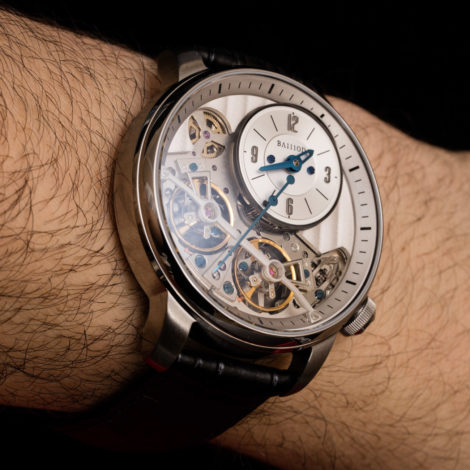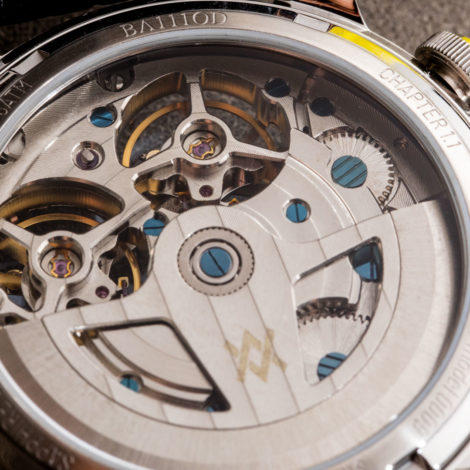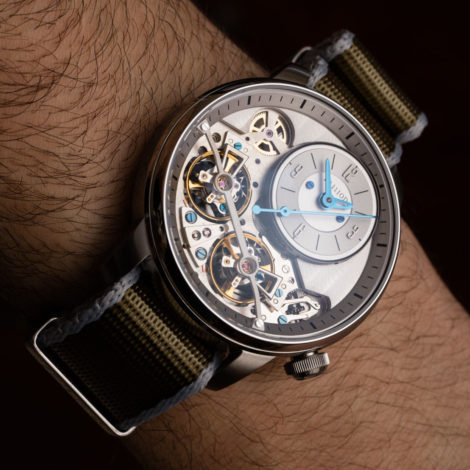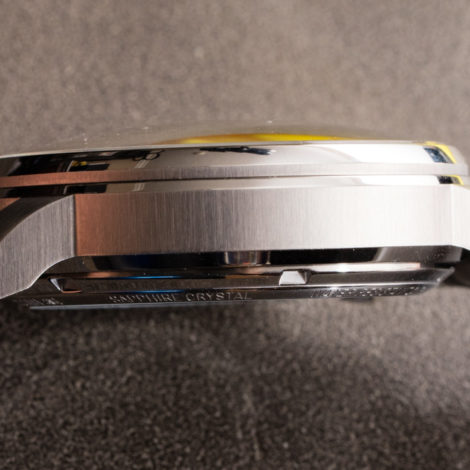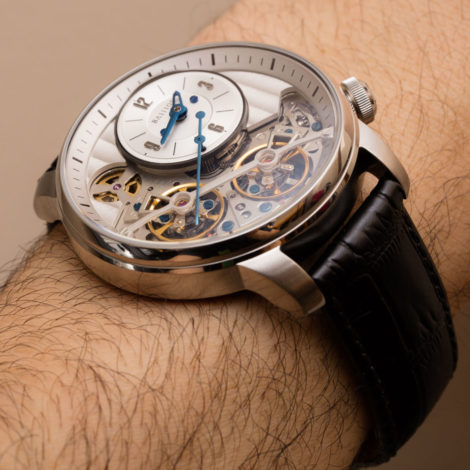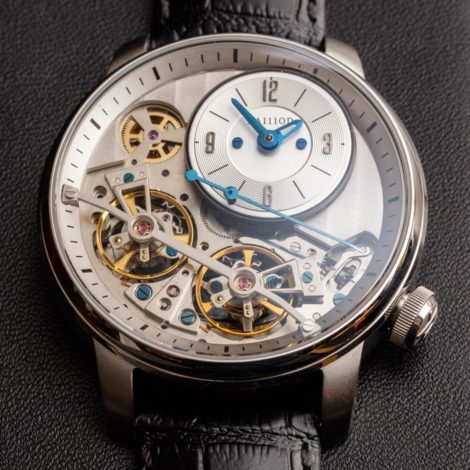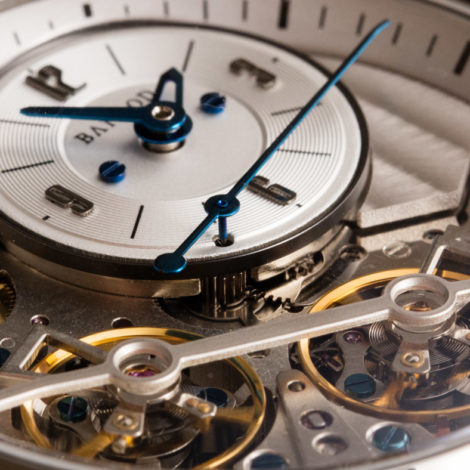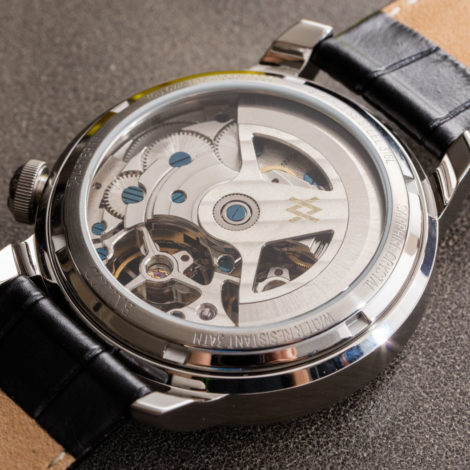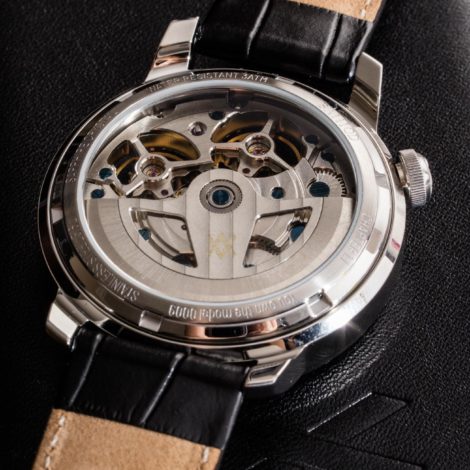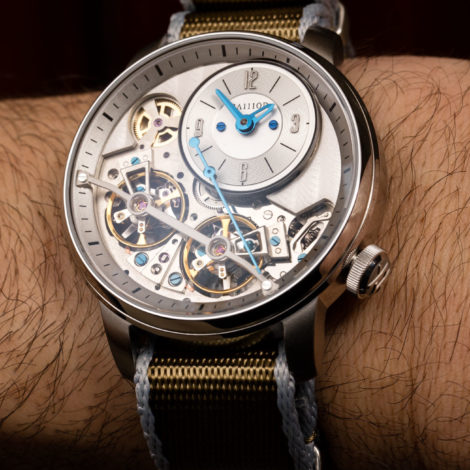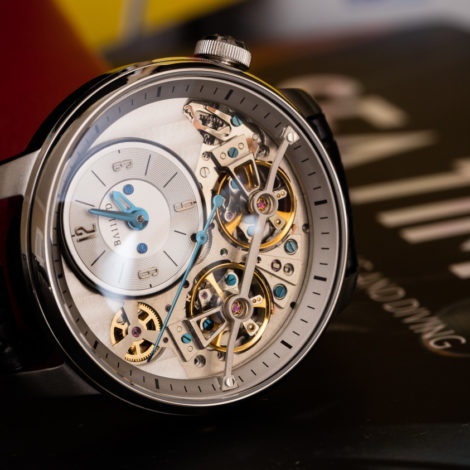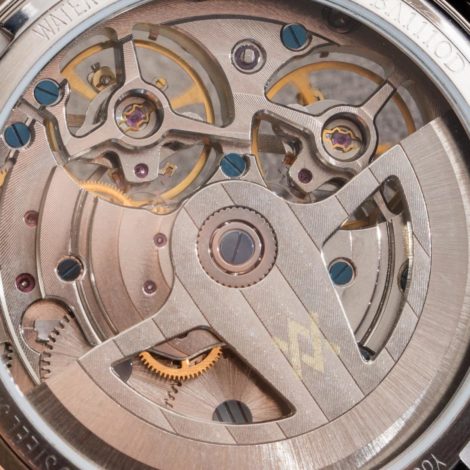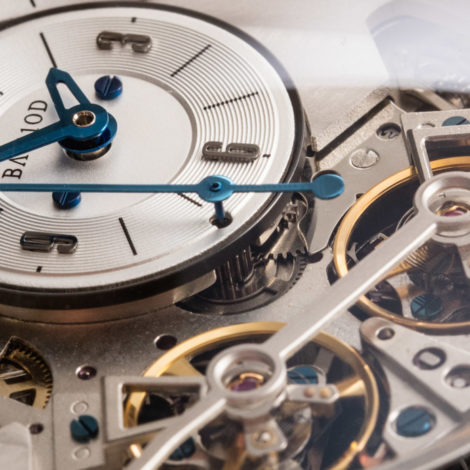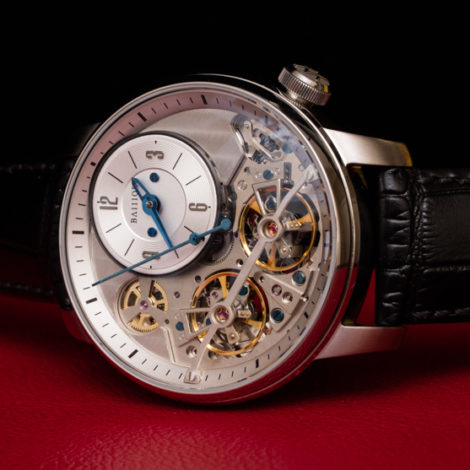
Are you ready to be an “affluendor?” That is the big question Thomas Baillod — founder of BA111Od watches — has for the timepiece consumer public. His first watches, the Chapter 1 (which comes as the Chapter 1.1, 1.2, and 1.3 to start), come with a unique way of purchasing them that is a brave attempt to shake up how timepieces are sold in an ever-adjusting online marketplace economy. The good thing for collectors is that, in addition to experimenting with a new sales model, the watches themselves are fun and an excellent value.
“Affluendor” is a combination of “aficionado/ambassador, influencer, and vendor.” In a world where timepiece product enthusiasts are far more responsible for sales than retailers and brands are, the concept is interesting and has a lot of merit (assuming consumers learn how it works). Visiting the Ba111od website is the best way to understand this model, but I’ll give you the basics before I delve into talking about the Chapter 1.1 watch itself. Ba111od watches understands two fundamental points about the product purchasing economy these days. Point number one is that, while sales interest might come from all over the place, online sales themselves do not need to occur across a large variety of stores. The point is that sales might benefit from being centralized even if consumers don’t all learn about or form the desire to purchase a product from the brand itself or through the same channels.
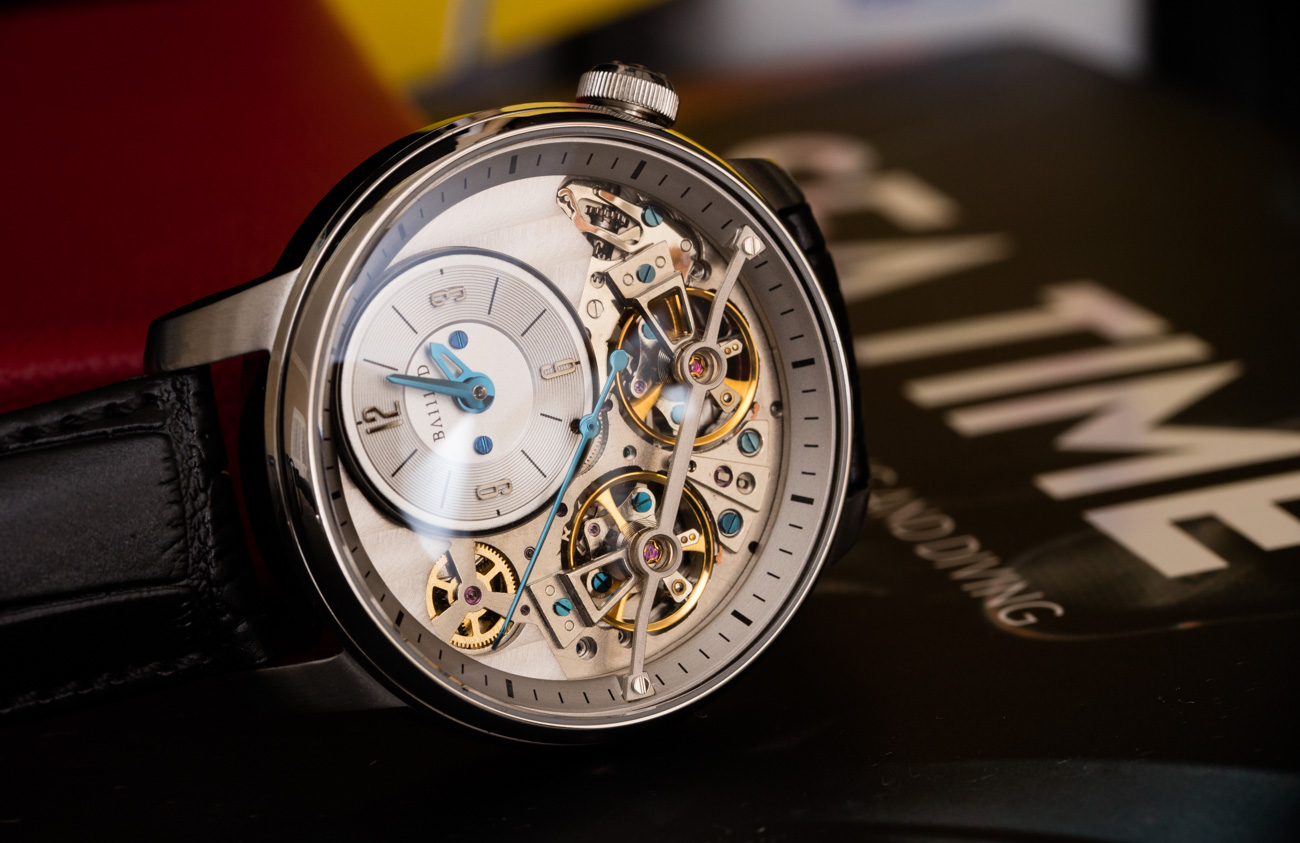
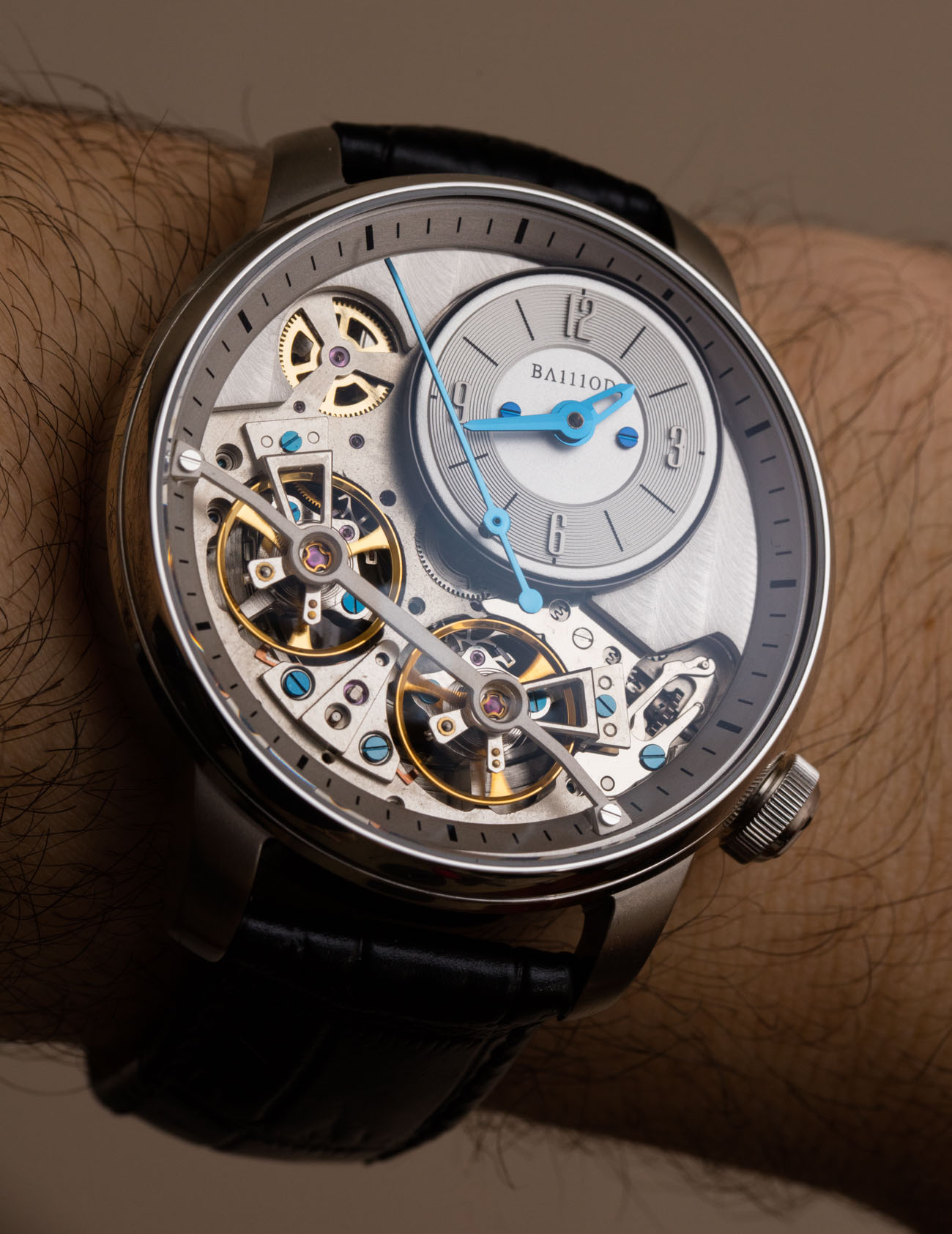
Point number two is that watch consumers are increasingly the reason that another watch consumer wants to purchase something. If seeing a watch on a friend inspires us to buy that watch, why not facilitate the transaction starting there, as opposed to elsewhere? Thus, the affluendor is born.
OK, that’s all nice and good, but how does this all occur, practically speaking? It happens with the sale of rights to buy the watches, as opposed to the watches themselves. Ba111od gives out a certain number of “tokens” (rights to buy, in essence) to customers who purchase a Ba111od watch — who then become affluendors. Those tokens can be given to whomever the affluendor desires — who needs the token for a right to purchase the watch.
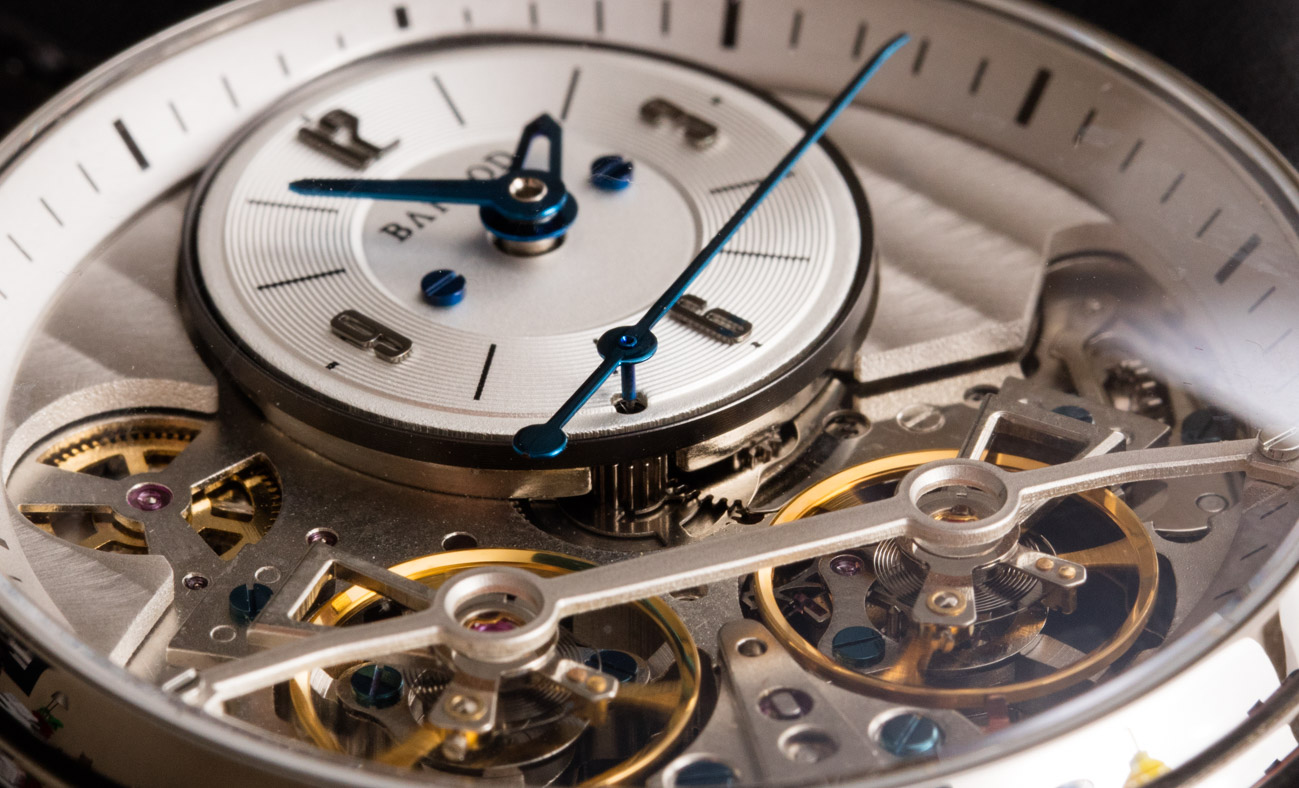
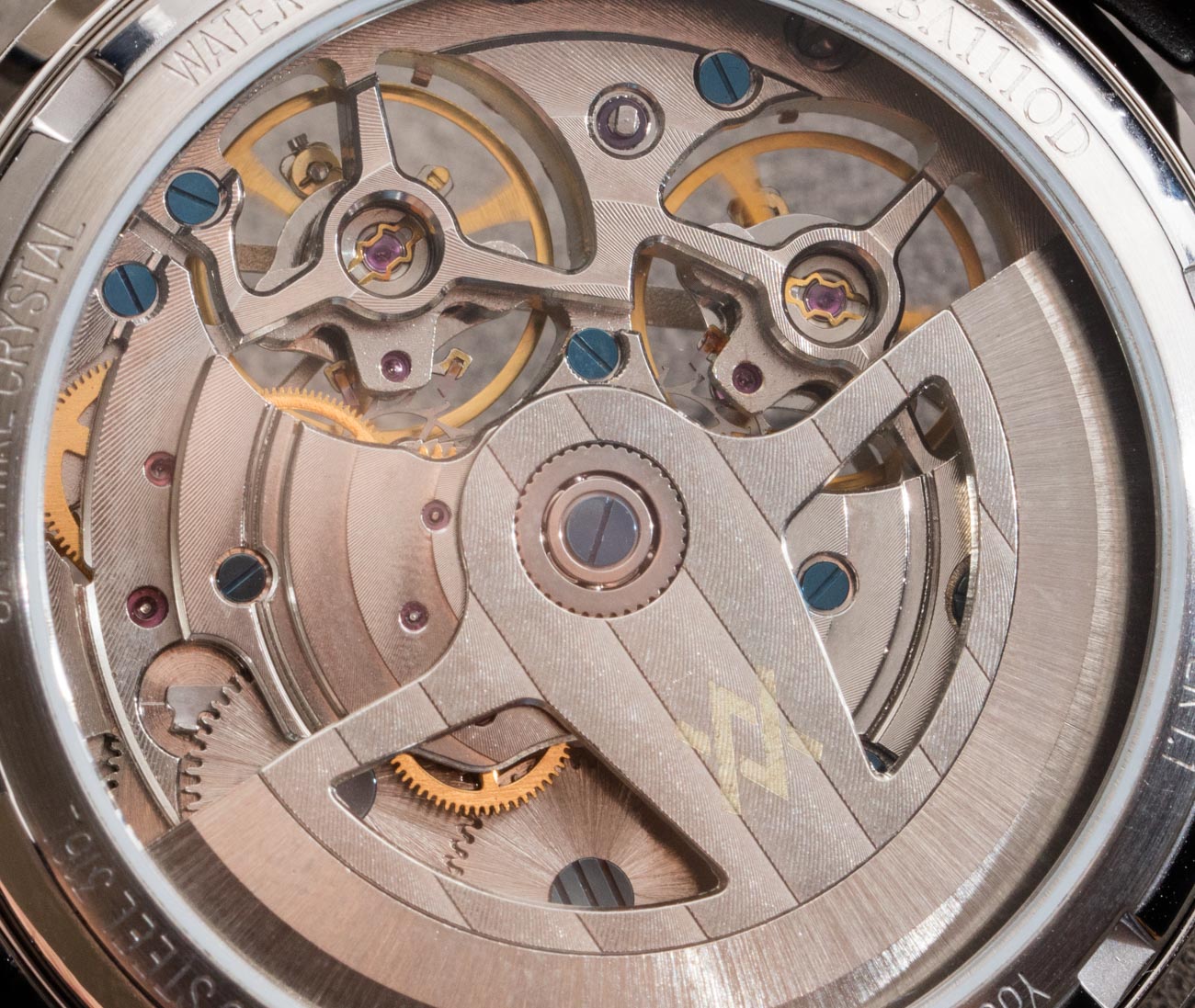
With the token. a consumer can purchase a Ba111od watch, or even sell/give that token to someone else. Retailers can also use tokens in a way like drop-shipping can. That means a watch retailer could have a small selection of Ba111od watches in their display case, and when a customer wants one, the retailer can give them a token or do the sale right there, and Ba111od will ship the watch out to the consumer — rather than the retailer having to invest in stock. The retailer would take a lower commission than if they invested in inventory, but in theory it could work out well for all parties, given the larger implications of how internet distribution and traditional retail distribution are currently at odds with one another. A model like using tokens in this regard would ensure a more consistent shopping and pricing experience for watch consumers — a model that, that over the long term, will make for a far stronger and reliable wristwatch market.
On to the Ba111od Chapter 1 that, outside the brand’s novel concept of selling watches, is worthy of discussion unto itself. Ba111od founder Thomas Baillod was born in La Chaux-de-Fonds and comes from generations of people in the Swiss watch industry. It’s no secret that his brother works at a major watchmaking name in Geneva. It is necessary to say all this because the design of the watch comes from Europe and people who are seasoned watch experts, even though its construction is all Chinese. In fact, most of the Swiss-made watches out there have similar stories, though brands aren’t public about it.
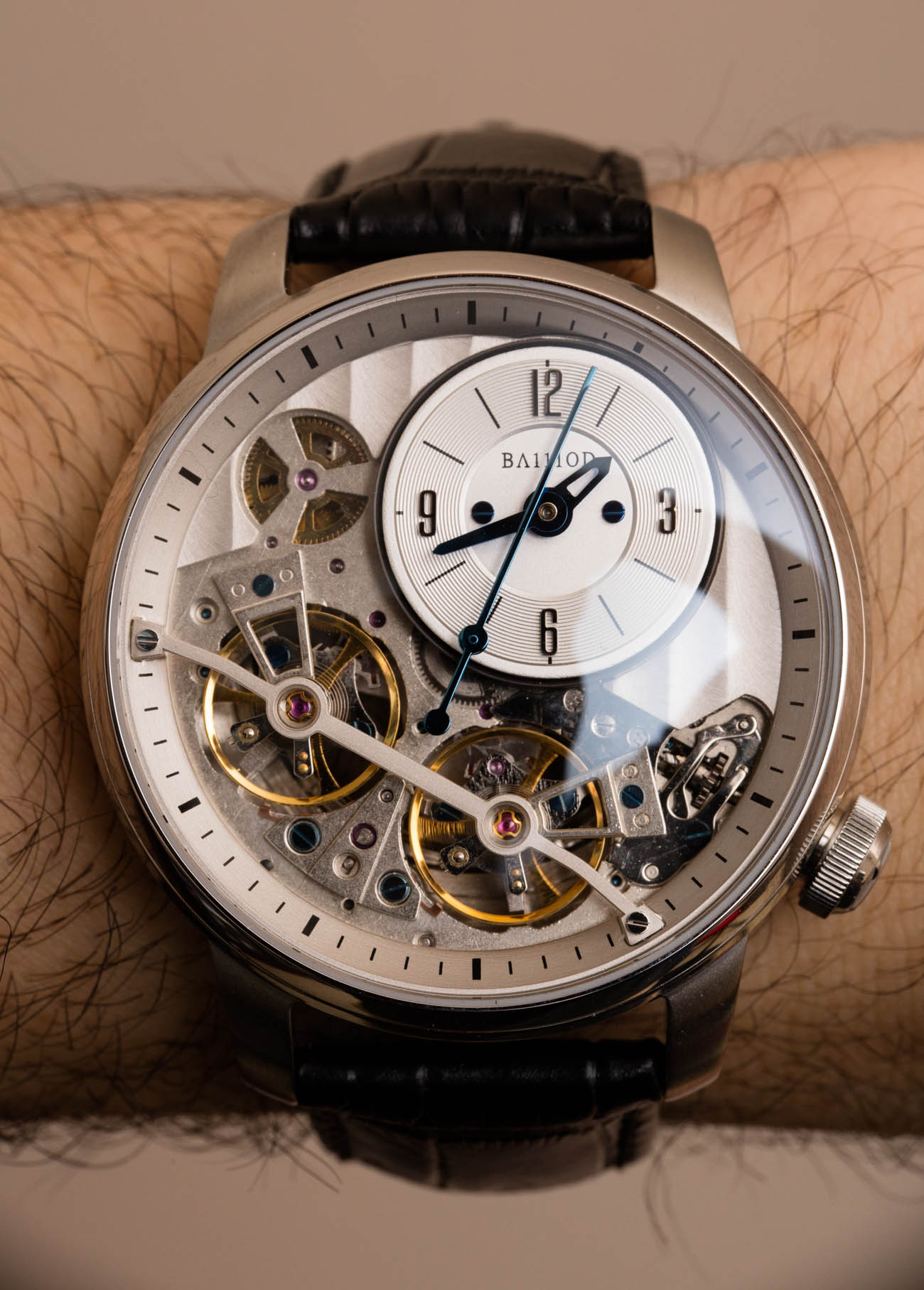
On a very subtle level, the Ba111od Chapter 1 watch is a message from Mr. Baillod to the industry that their value propositions to consumers are all off. He wants to show them that he can do nearly what they can but in a surprisingly inexpensive fashion. Does he wish to hurt the industry he comes from with such a move? I don’t think so. Knowing Thomas, I believe his goal is to both besmirch them and also encourage them to focus on where they do offer value. The real reason to buy a Swiss watch is because of attention to detail, loads of human effort, and application of real watchmaking culture and tradition. Swiss watches, in a lot of ways, almost necessarily require a lot of parts made in Switzerland because they are often made better in Switzerland with visual results to prove it. What then is a Swiss-designed watch that uses trained eyes to get the best of Asian manufacturing? I’m not sure, but brands ranging from SevenFriday to Ba111od are examples.
For under $400, the Chapter 1.1 is a good value. The 43mm-wide polished steel case (water resistant to 30 meters) is topped with a very clear and glare-free double-domed sapphire crystal. That you can see into the dial so well and legibly is a not an insignificant deal. The case is classic in fashion but with modern contrast polishing. It isn’t a small watch, but it isn’t too large, either, and it is meant to be a frame for the highly animated mechanical movement inside it.
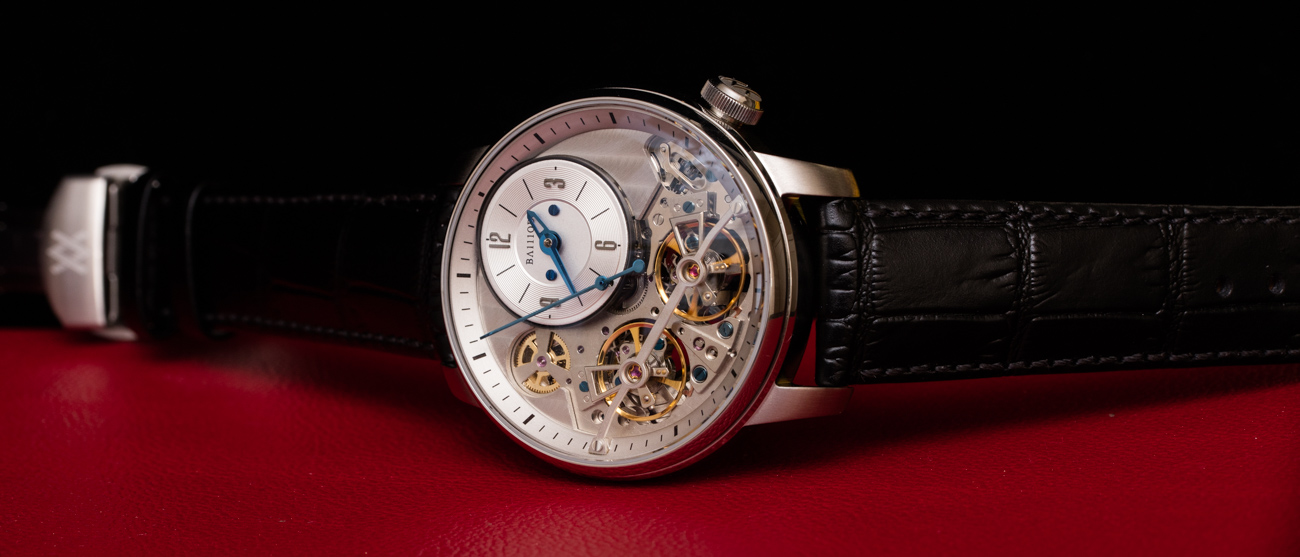
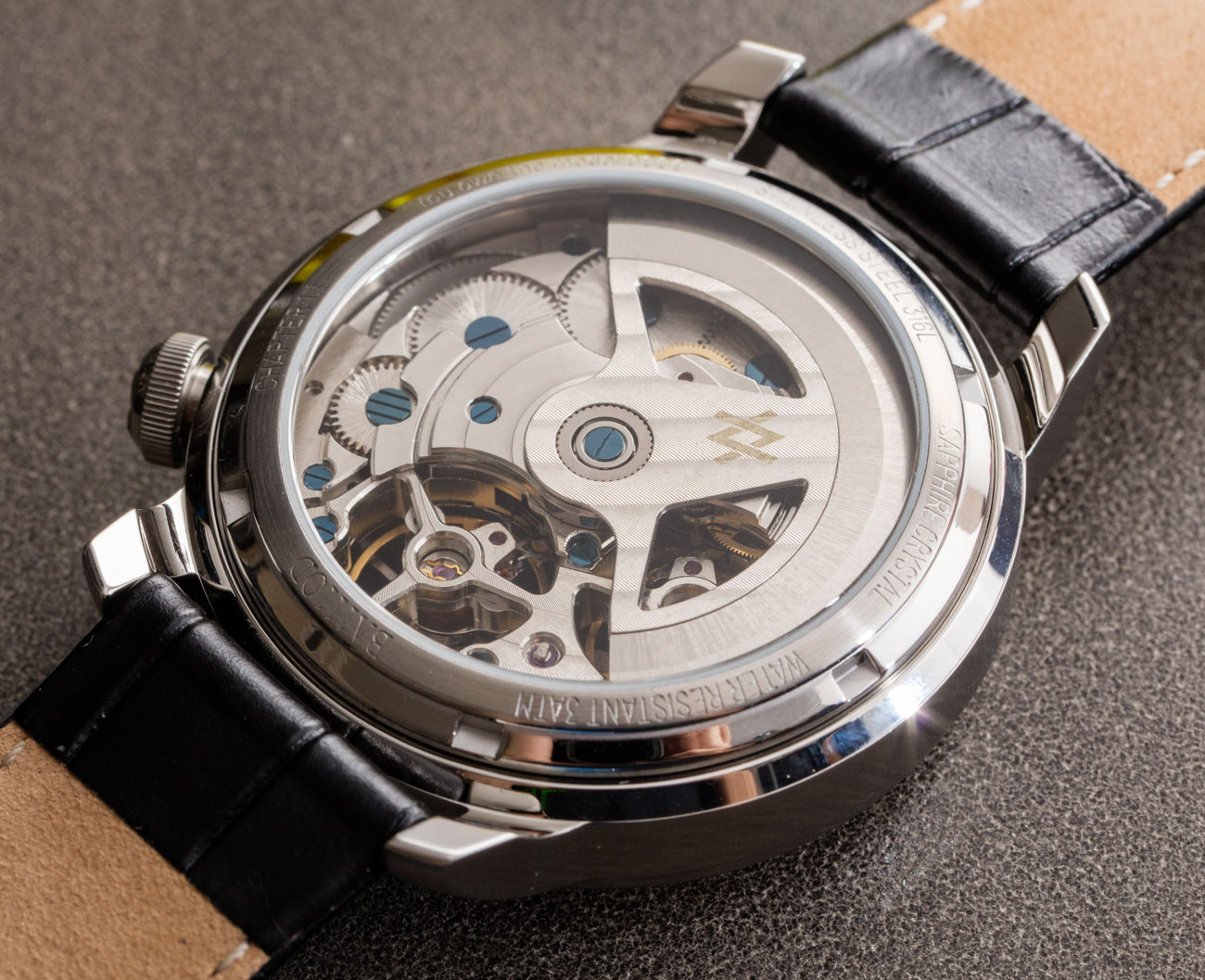
Styled somewhere between Breguet and Maurice Lacroix, the Chapter 1.1 is all about the double balance-wheel-based movement inside. The Chinese-made automatic movement is actually really nicely made for the price — with solid attempts to replicate traditional surface finishing, as opposed to leaving so many movement parts blatantly unfinished (as is the case in some cheap mechanical movements). The dial is displayed via a subsidiary dial for the hours and minutes, and the seconds are indicated via a traditional centrally mounted seconds hand. For me, this is like a poor man’s Arnold & Son when you take into consideration the view of the double balance wheels that are connected by a true differential system. How accurate is the movement? I don’t know; it’s not a chronometer. But I don’t think you need to reset the time more than once a week. I’m certainly happy for this price.
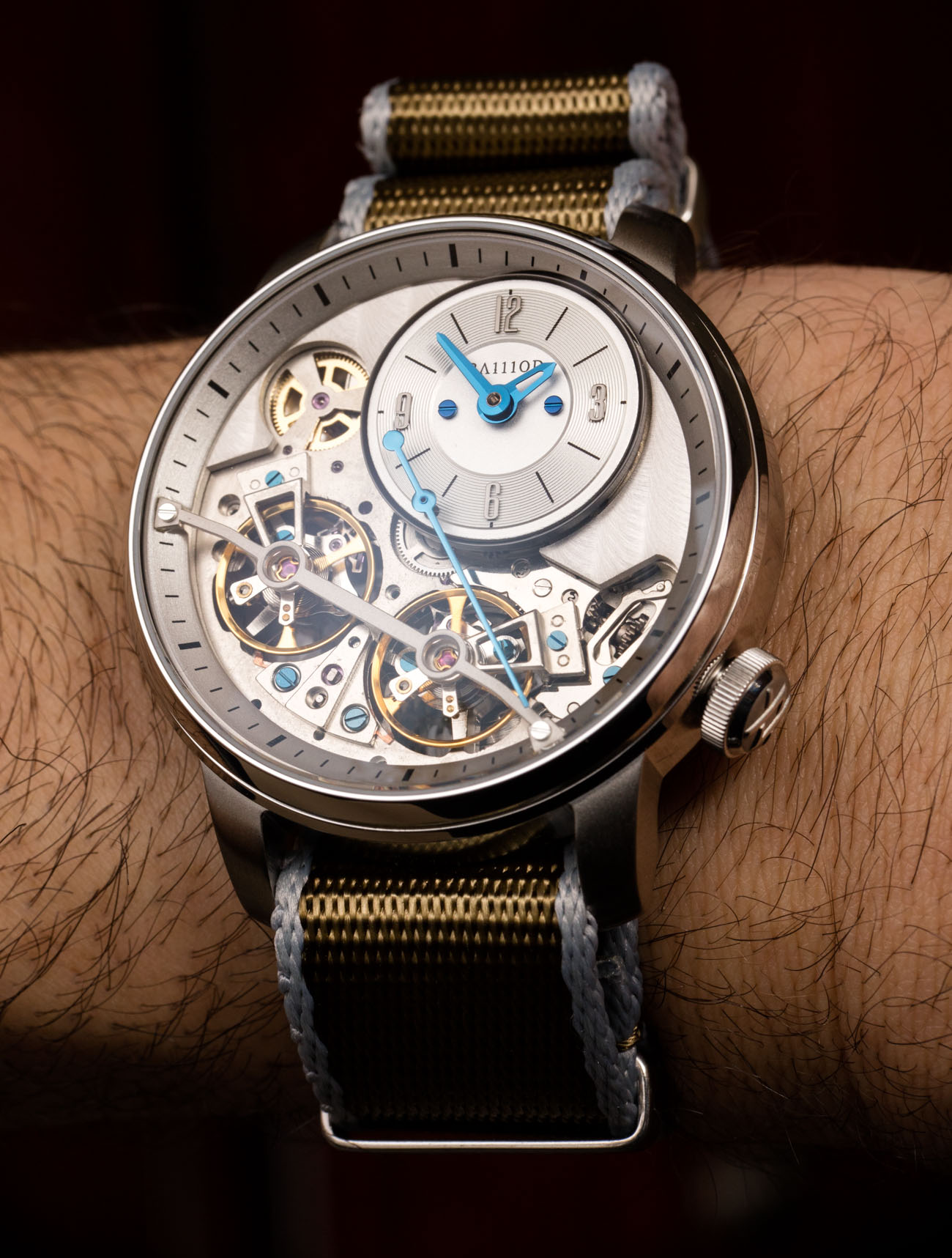
As it common with such watches, the case, dial, and movement are often far nicer than the strap and buckle. Ba111od does its best within a limited budget to offer a leather strap and folding metal deployant that is etched with the family chest. Those strap styles, in my opinion, are always stiff and bulky. The first thing I did to improve the wearing experience was to take off the strap and put the watch on something else. I found it was really comfortable on a NATO-style strap, actually. Note to brands wanting to make a dress-style watch: Ditch the deployant clasp. Nine out of 10 times, a simple pin buckle will be much more comfortable than an awkward (and often sharp) folding deployant clasp. I don’t care if people feel that these straps make watches look more expensive; they are not comfortable most of the time.
How do you get a Ba111od Chapter 1.1 or the other models? Well, you need to get to know an affluendor. If you don’t, then you can contact Ba111od watches, and they will actually introduce you to one via their Facebook group. Assuming you and your affluendor hit it off, you could be given your own “rights to sell a Ba111od” watch tokens along with your timepiece and see if you feel it is the future of sales for at least some niche timepiece brands. The Ba111od Chapter 1.1 watch has a retail price of $360 USD. Learn more at the Ba111od website here.

